The planet is the point
Climate change is real, but China is developing solutions.
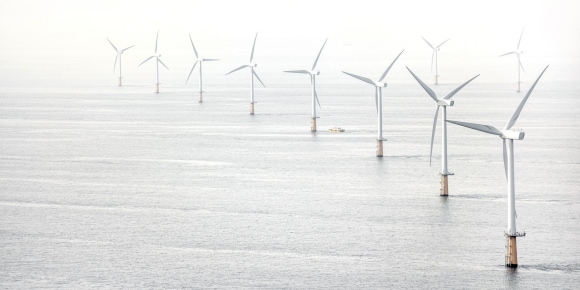
The planet is the point – in 60 seconds
The planet is the point – in 60 seconds
- China's climate challenges are severe, but it is serious about addressing them;
- China has ramped up green bond financing, grown renewable energy capacity, and developed a series of ideas to tackle climate change;
- Sponge cities and insect-driven food waste processing are two examples of innovative ideas currently being developed in China
- We believe China will continue to be a future source of innovative and investible ideas in the growing sustainable investing field.
China attracts headlines because of emissions, but when NASA launched its satellite survey of the planet in 2018, it noticed an unexpected change in China.
China had become a lot greener, with an estimated 10% increase in leaf coverage compared to 10 years previously, outpacing the global average of 2.3% .
China's government has increased green space with tree planting initiatives to limit soil erosion, reduce air pollution, and slow climate change.
Mobilizing the military
Mobilizing the military
And the Chinese government has taken this effort so seriously that it assigned 60,000 soldiers to plant 84,000 sq.km of plant trees and shrubland across the country from 2018 .
Given China's climate challenges, its clear why the government is using the military: rapid urbanization is putting pressure on city resources, burgeoning car ownership is driving air pollution, and desertification is threatening key cities.
But it's also partly because of Donald Trump. Trump's 'America First' policy has abandoned the Paris Climate Accord and creating a vacuum in global climate leadership that China wants to fill.
Ramping up green financing
Ramping up green financing
So China is funnelling capital into sustainability projects, most notably via green bond financing.
Green bonds channel investor funds into environmental projects, like renewable energy and pollution prevention, and have emerged as a new financing source as the world ramps up sustainability investment.Ikea has had a successful time in China, but it is having a tough time in some of its canteens.
China: Cumulative green bond issuance (USD billions), 2015-2018
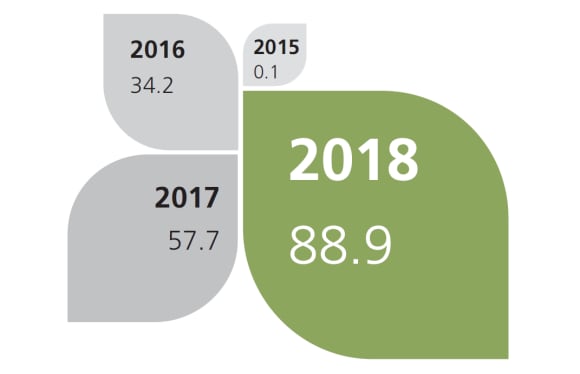
Building out infrastructure
Building out infrastructure
And green bond financing is feeding investment in ESG projects, such as the roll-out of renewable energy projects, where China is leading the world, allocating USD 758bn to renewable energy projects since 2010 – more than double the USD 356bn allocated by the United States, according to Bloomberg New Energy Finance data.
Renewable energy capacity investment (USD billions), 2010-H1 2019
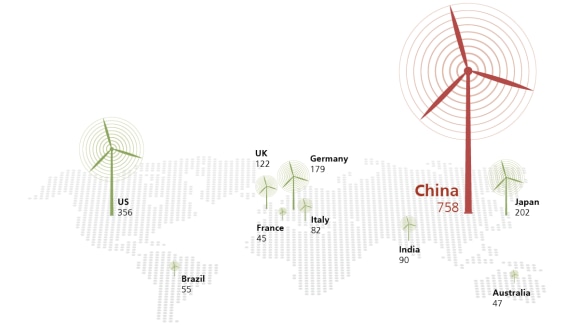
And that means that China leads the world in already established renewable energy capacity, with 450GW installed since 2009, according to Bloomberg New Finance data.
Renewable energy capacity added between 2009 and 2019, GW

The sponge city
The sponge city
But sustainable infrastructure investment isn't just limited to renewable energy.
China is also leading the world in developing new approaches to city development to address flooding caused by climate change.
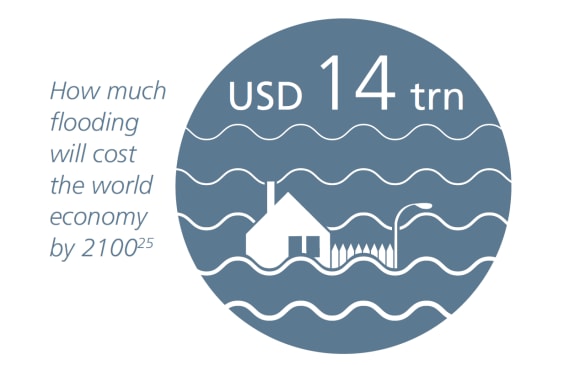
Flooding has always been a menace in China, but massive flooding is becoming more common and particularly from the Yangtze River.
The Yangtze runs through Central and Eastern China and through areas with a combined population of more than 400 million people , and has delivered colossal floods in 1870, 1931, 1954, 1998, 2010 and 2017, incurring thousands of deaths and millions in economic costs.
Wuhan, a city on the Yangtze with a population of 8.3m, is one city that has suffered from terrible flooding over the years but is now pioneering innovative solutions to handle it.
Wuhan is developing the concept of a 'sponge city' with infrastructure and designs that contain and manage massive flows of water.
That means creating artificial ponds, designating special areas as wetlands, installing underground tunnels and storage tanks, and building public spaces with concrete that has tissue-like qualities that can absorb and retain water.
The nationwide programme has been expanded to cover 30 cities, and is increasingly being adopted overseas, because flooding is not just a problem limited to China, but is expected to affect an estimated 300 million people globally in the next five years.
But beyond building infrastructure, China's emphasis is also on both changing habits and dealing with the after effects of China's growing consumer-led economy, and recent efforts with electric car development and waste management show, again, how China is making big steps.
Electric cars
Electric cars
China has many cities where air pollution exceeds officially-designated 'safe' levels.
As China urbanizes, air quality is becoming an increasingly sensitive issue and one the Chinese government is growing concerned about.
Researchers have estimated that air pollution in China is both directly and indirectly responsible for millions of deaths per year. So China is pushing ahead with developing an electric vehicle sector.
That means developing both world-leading battery technology and also developing new models of electric cars. With these goals in mind, we have seen some of the world's largest auto companies, like BMW and Tesla, commit to manufacturing EVs in China.
On the demand side, China has offered generous subsidies for EV buyers, high fees for new petrol car licenses, aggressive plans for charging infrastructure, and reduced subsidies on petrol and gasoline, are just four parts of a detailed policy package.
And at the macro level, this appears to be having an effect. That change in buying cars also means a change in fuel consumption. China’s gasoline demand, after almost doubling between 2010 and July 2019, is now essentially flat. China diesel demand, meanwhile, peaked several years ago.
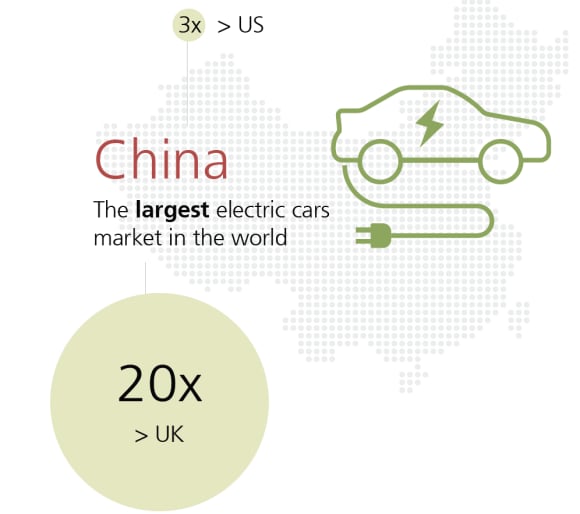
And all these efforts are propelling China's electric vehicle market, with 1.1 million electric cars sold in China in 2018, making China the largest market in the world, 3x greater than the US and 20x greater than the UK⁹. Now, Chinese companies are some of the largest electric vehicle sellers in the world.
Revenue from electric vehicle sales (USD Billions)
Revenue from electric vehicle sales (USD Billions)
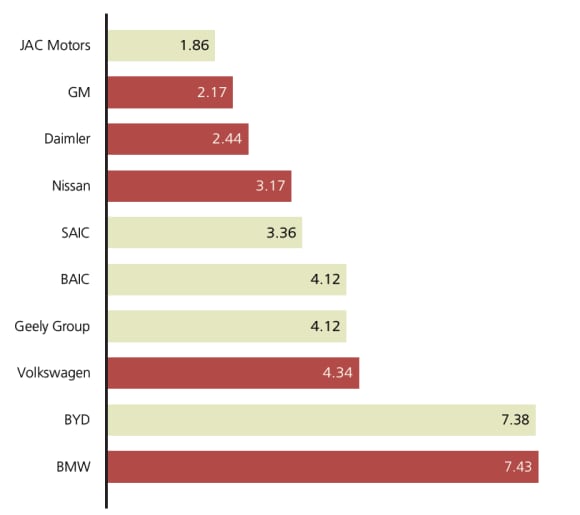
But things will get tougher for China's EV makers. Though the industry has grown recently, the government is now taking a tougher line by reducing subsidies to promote competition and industry rationalization.
That means short-term pain, but will be positive in the long-run by promoting the most competitive and tech-advanced players. Given the scale already existing, we're expecting a more competitive and innovative industry which is likely to continue leading the world in the future.
Bug business?
Bug business?
But for all that China is pushing to develop new industries; its entrepreneurs are coming up with innovative solutions to some of China's most challenging problems.
And food waste is a great example. China produces an estimated 18m tonnes of food waste every year, and that's an environmental challenge because it puts pressure on landfills and raises greenhouse gas emissions.
And one enterprising entrepreneur has come up with a solution. Li Yanrong, founder of Shandong Qiaobin Agriculture Technology, has built a climate-controlled complex to house cockroaches and sustainably address China's food waste and supply challenges.
Li's solution involves collecting food waste, processing it into a liquid substance, squeezing it through tubes that empty into the cockroach sheds, watching as the cockroaches eat it up, and then turning the cockroaches into animal feed at the end of their one-year lifespan.
Li believes cockroaches are a sustainable solution to the food waste problem.
Firstly, it's because cockroaches are highly efficient waste consumers, meaning they can get through a lot of waste in a very short time period.
For instance, the estimated one billion cockroaches at Li's farm can munch their way through 50 tonnes of food waste per day – the equivalent in weight to seven adult elephants.
Secondly, cockroaches are efficient at not only working their way through waste, but also highly efficient in turning that waste into edible protein, a key factor to consider when sustainably developing animal feed.
Final Thoughts
Final Thoughts
Efforts like this, plus the examples listed previously, signal what we think is a major cultural and economic shift in China as it gets serious about climate change and moves decisively on a series of ground-breaking initiatives.
In part, that's because climate change is a colossal challenge for a country like China which is experiencing rapid and large scale changes in its society and economy, such as widespread urbanization and auto ownership.
But China's scale offers an advantage because it opens up opportunities for both the government and private sector to experiment with new ideas at scale, and then expand on a nationwide basis.
So while we see the challenges, we also see the opportunities that China offers as a testing ground for new approaches and technologies that may offer solutions to countries around the globe.
And that's why we believe China will continue to be a source of innovative and investible ideas in the coming years and where we feel all investors should be focusing on, especially as the quest continues for sustainable solutions to the world's climate threats.
